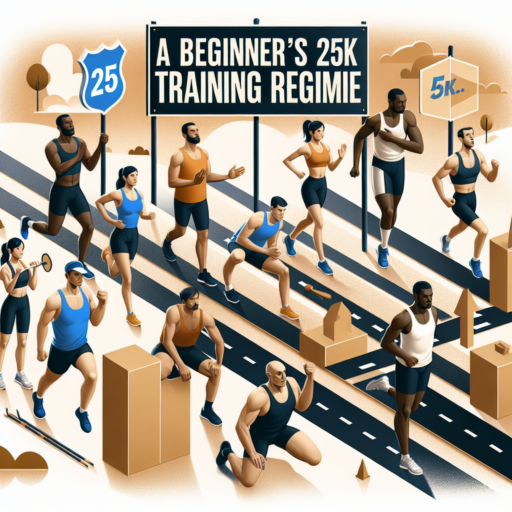How many weeks to train for a 25k?
Training for a 25k race is a commitment that requires both time and dedication. The number of weeks needed can vary significantly depending on your current fitness level, running experience, and personal goals. Typically, an individual with a moderate base in running might look at a 12 to 16 week training plan. This timeframe allows for a gradual build-up in mileage, helping to prevent injury while improving endurance and speed.
Key Components of a 25k Training Plan
Effective 25k training plans incorporate several key components. These include long runs to build endurance, speed work to improve your pace, and recovery days to allow your body to heal and strengthen. Additionally, incorporating strength training and flexibility exercises can also enhance your running performance and reduce the risk of injury. Remember, each week of training is a step towards reaching your 25k goal.
Adapting the Training Plan to Your Needs is crucial. While the 12 to 16-week timeline is a good general guideline, your plan may need adjustments. Listen to your body’s responses to the training load and be ready to modify your plan for rest or additional training as needed. Personalizing your training plan not only makes it more effective but also helps in keeping you motivated and injury-free throughout the training process.
How to prepare for 25k?
Preparing for a 25k run is both an exciting and challenging endeavor, requiring a blend of physical training, nutrition, and mental preparation. To achieve your best on race day, integrating a comprehensive plan that encompasses these aspects is essential. Whether you’re a seasoned runner or a newcomer to longer distances, the journey to completing a 25k is a rewarding experience that tests your limits and showcases your dedication.
Physical Training
Physical preparation is the cornerstone of your 25k preparation. A well-structured training plan should gradually increase your mileage, allowing your body to adapt to longer distances without risking injury. Incorporate a mix of long runs, speed work, and recovery days to build endurance, improve pace, and facilitate recovery. Highlighting consistency in your training is crucial; regular runs accustom your body to the rigors of distance running and enhance your overall fitness level.
Nutrition and Hydration
Optimizing your nutrition and hydration can significantly impact your performance and comfort during the race. Focus on a balanced diet rich in carbohydrates, proteins, and healthy fats to fuel your training and facilitate recovery. Hydrating adequately before, during, and after your runs is imperative to prevent dehydration, especially on long run days. Incorporating electrolyte-enhanced drinks can help maintain your electrolyte balance and prevent cramping during your 25k race.
Mental Preparation
Mental toughness plays a pivotal role in long-distance running. Developing strategies to overcome the mental challenges that arise during a race is key. Visualization techniques, setting realistic goals, and positive self-talk can empower you to push through difficult moments. Remember, completing a 25k is as much a mental achievement as it is physical. Therefore, nurturing a resilient mindset will prepare you to tackle the psychological demands of race day with confidence.
How do I train for a 20k?
Training for a 20k run is an exciting challenge that requires a mix of endurance, strength, and strategy. Whether you’re a beginner or an experienced runner, preparing your body and mind for this distance is key to crossing the finish line successfully. Here are focused steps to help guide your training process.
Creating a Training Schedule
Before lacing up your sneakers, it’s crucial to create a balanced training schedule. Start by running shorter distances and gradually increase your mileage each week. A good rule of thumb is to increase your weekly mileage by no more than 10%. This incremental approach helps build endurance while minimizing the risk of injury. Incorporate rest days to allow your body to recover and adapt to the increased demands of training.
Incorporating Strength Training and Cross-Training
In addition to logging miles, include strength training and cross-training in your regimen. Strength exercises, such as squats, lunges, and planks, improve your running economy and decrease your risk of injury by strengthening the muscles used in running. Cross-training activities like cycling, swimming, or yoga can enhance your cardiovascular fitness without the added stress on your running muscles, providing a holistic approach to your 20k preparation.
Nutrition and Hydration
Proper nutrition and hydration play a pivotal role in your training journey. Focus on a balanced diet rich in carbohydrates, proteins, and healthy fats to fuel your runs. Staying hydrated is equally important; drink plenty of water throughout the day, especially before, during, and after your runs to maintain optimum performance and recovery. Tailoring your diet to meet the demands of your training can make a significant difference in how you feel and perform on race day.
No se han encontrado productos.
How to go from 5k to half marathon?
Transitioning from a 5k to a half marathon is a commendable goal that requires a mix of dedication, strategic planning, and patience. If you’ve conquered the 5k and are looking to up the ante, you’re in the right place. Doubling or even tripling your running distance might seem daunting, but with the right approach, it’s entirely achievable.
Develop a Gradual Training Plan
First and foremost, it’s essential to develop a gradual training plan. Jumping from a 5k to a half marathon distance without a strategic approach can lead to injury and burnout. Incrementally increasing your weekly mileage by 10% is a tried-and-tested method that helps your body adapt to the increased demands. Incorporating rest days and lighter training weeks into your regimen allows for recovery and prevents overtraining.
Incorporate Strength and Flexibility Training
While increasing mileage is crucial, it’s equally important to include strength and flexibility training in your routine. Core strength exercises, weight training, and yoga can enhance your running efficiency, improve your posture, and reduce the risk of injury. Strengthening your muscles and increasing your flexibility supports your body’s endurance and recovery capabilities as you tackle longer distances.
Ultimately, patience plays a pivotal role in successfully moving from a 5k to a half marathon. Acknowledging and celebrating small victories along your journey maintains motivation and keeps the experience enjoyable. Remember, running is as much a mental challenge as it is a physical one; therefore, keeping a positive mindset is key. By progressively building your endurance, integrating variety into your training, and prioritizing recovery, you’ll find yourself crossing the half marathon finish line with confidence and strength.




